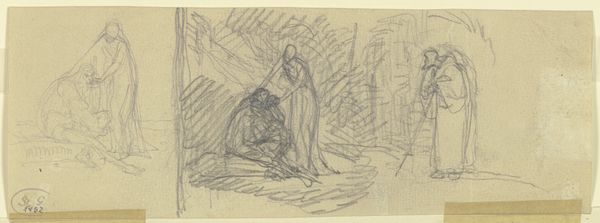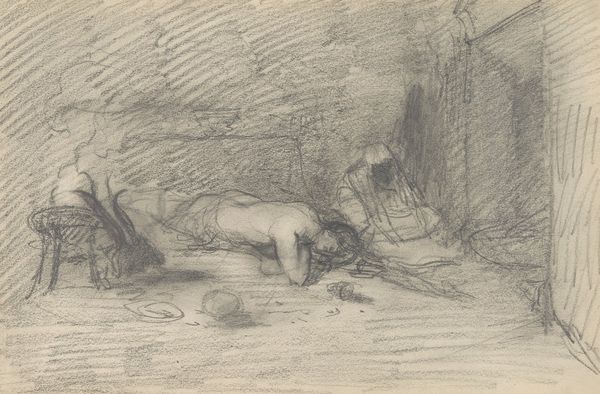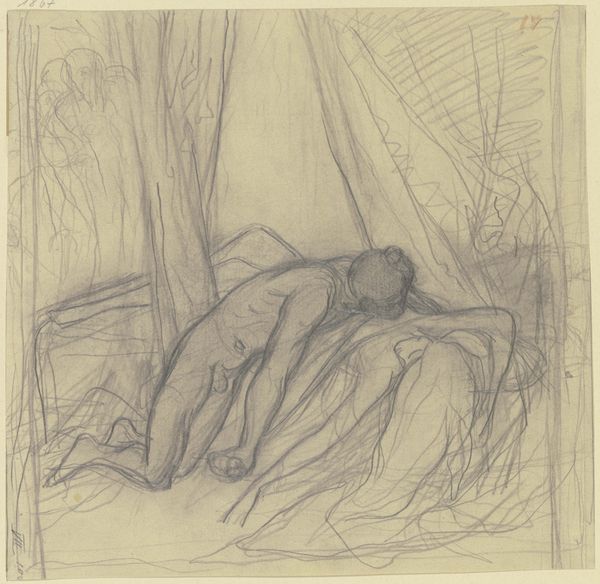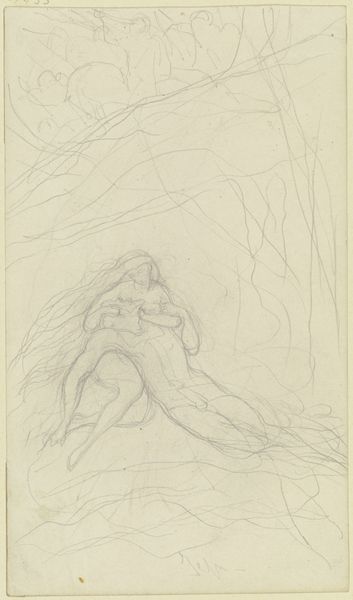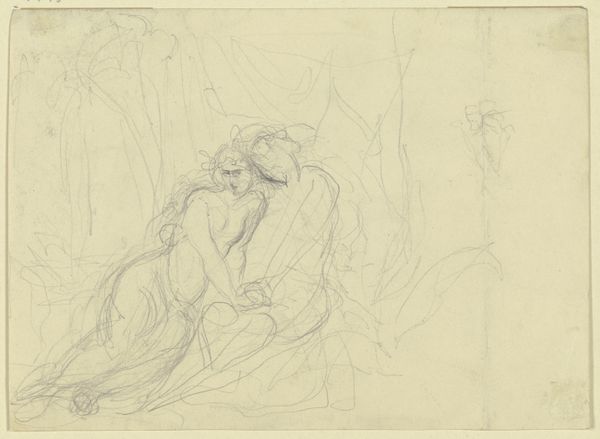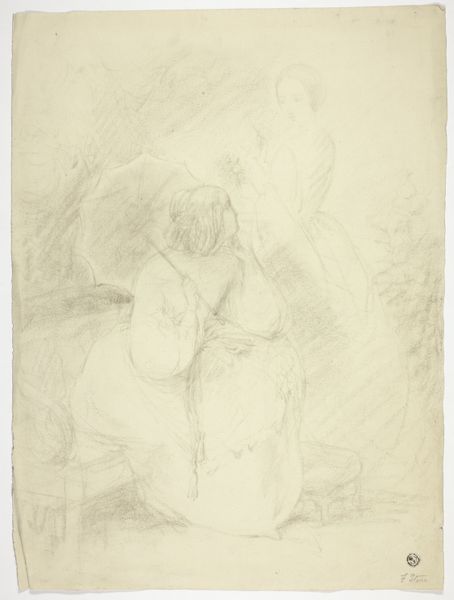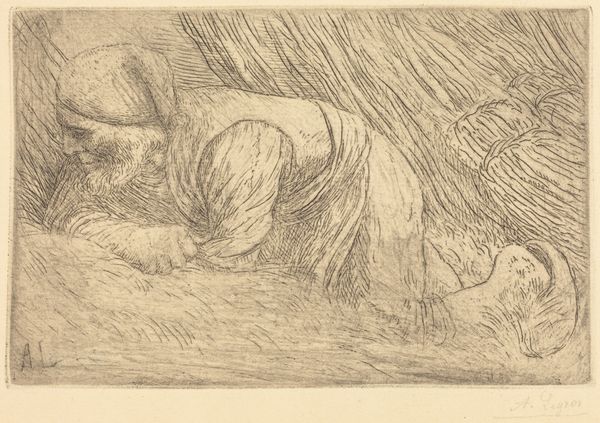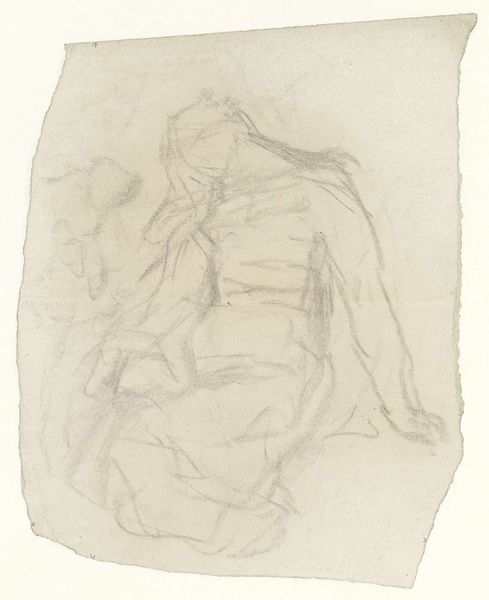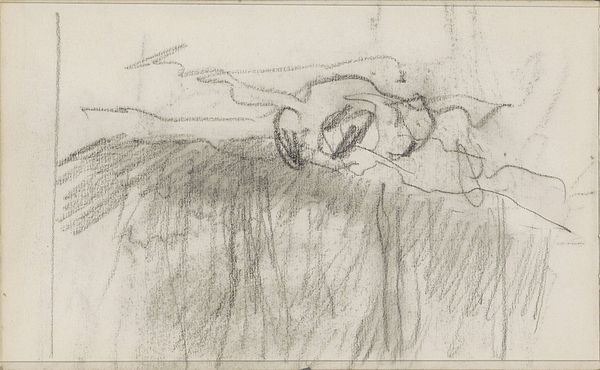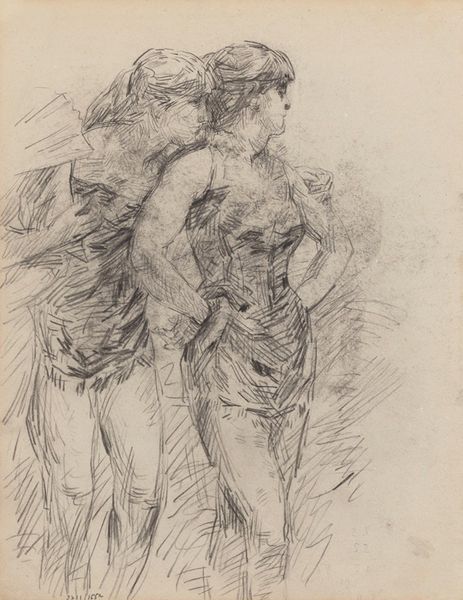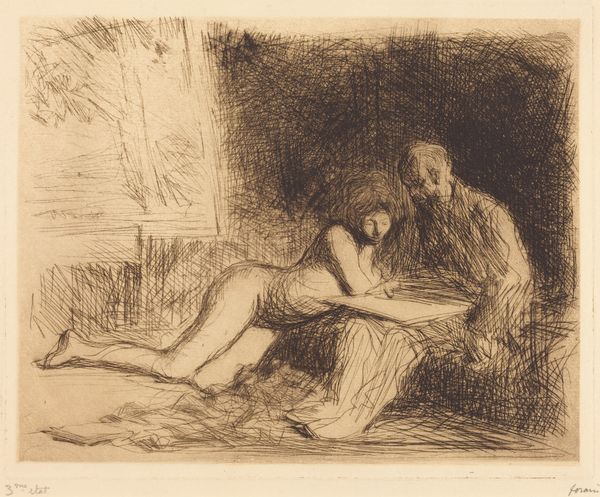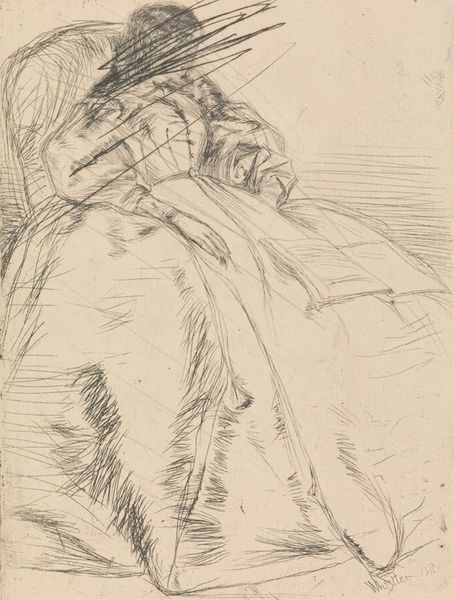
Dimensions: height 115 mm, width 83 mm
Copyright: Rijks Museum: Open Domain
Curator: What strikes me immediately is the immediacy of this image. Charles Jacque, sometime between 1823 and 1894, captured an intimate moment with just pencil on paper. Editor: Yes, that very simplicity contributes to the quiet intensity. Look how the figures almost dissolve into the landscape, blurring the boundaries between human and nature. It suggests an Eden-like narrative, yet subtly disrupts conventional power dynamics through its raw depiction of affection. Curator: Absolutely. And if we think about Jacque's practice, known for his etchings and paintings of rural life, this drawing offers insight into the labour behind those images, revealing a direct engagement with materials and a hands-on process so often obscured. It shows an artistic intimacy and an artistic economy that's quite special. Editor: That's a key point! These are not idealized peasants, but figures enmeshed in the landscape’s very fabric, hinting at complex class structures and challenging Romantic stereotypes about rural innocence and purity. This depiction provides an earthy counterbalance to societal expectations regarding gender and sexuality too, showing a candid and unguarded view of love and intimacy. Curator: Note also the mark-making. There’s no attempt to smooth or conceal the physical labor that went into its making; rather, Jacque leaves visible traces of production and that becomes part of its aesthetic value. I’d add that he had his Barbizon period – you almost get a premonition of Van Gogh in these rural settings, which is kind of unusual for this Romanticism style. Editor: Agreed! In fact, this aesthetic choice amplifies the overall impact. The composition resists idealized depictions and reinforces themes of intersubjectivity. The intertwined bodies nestled at the foot of the tree, which dwarfs them in size, is about seeking comfort while highlighting their vulnerability, and humanity within larger systems of environmental, economic, and even romantic exchange. Curator: It’s intriguing how that tree both obscures and shelters them. Its thickness conveys the harshness of life for the peasantry at the time. So what feels romantic may also contain underlying social critique about class and survival in Jacque’s day. Editor: Yes, so it acts as a witness, and in some ways, a silent participant. This is a compelling snapshot of laborers at rest, reminding us to view historical portrayals critically through lenses that account for labor, sexuality, gender, and socio-economic context. It underscores how art becomes this site for both revealing and negotiating the tensions embedded in lived experience. Curator: A fitting point to leave our listeners to ponder, I'd say! Thank you. Editor: My pleasure.
Comments
No comments
Be the first to comment and join the conversation on the ultimate creative platform.
